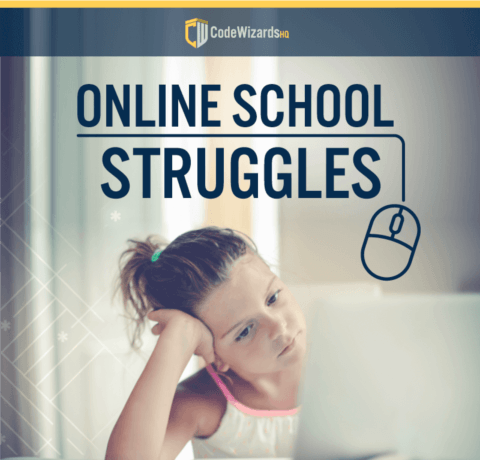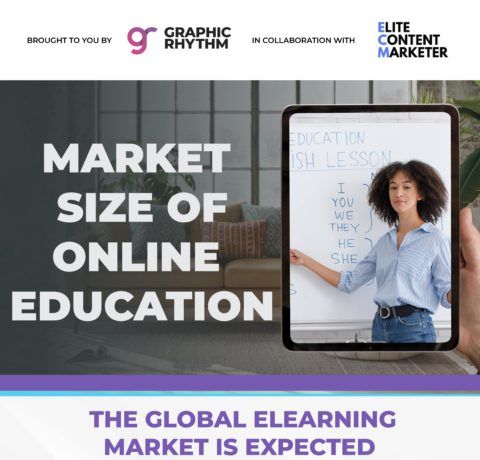The Future of Online Schools Infographic
We’ve already seen the rise of online options, from kindergarten to the university level, but will digital learning soon overtake more traditional methods, and will the experience be richer for the change? The advancement of artificial intelligence-equipped tools has made it possible for nearly anyone, anywhere to connect to and utilize the global network of information. The future of online schools is exploding!
We are now living in a fast-paced world in which our time is juggling between our families, our jobs, our lifestyles and, for many of us, our education. Attending school online for many is the ONLY option and, due to this, the future of online schools is growing exponentially. With so many institutions climbing on board, finding a school that fits your individual needs is not as tough as it once was.
The future of online schools is not only exciting, but necessary. Achieving an education, no matter at what level, via an online option removes barriers, redefines learning, allows for faster results, and, many times, can be obtained free of charge. Virtual and augmented reality are already taking the foundation of our educational systems by storm, but where will up-and-coming enhancements in the realm of portable, wearable, and implantable tech take us? To infinity and beyond (literally)!
Education’s Evolution: A Transformation in the Classroom
From chalkboards to iPads, innovative technology has been an essential part of the classroom for centuries.
- 1890: Chalkboard
- 1900: Pencil
- 1930: Overhead Projector
- 1940: Ballpoint Pen
- 1950: Photocopier
- 1970: Handheld Calculator
- 1972: Scantron
- 1980: Early Computers
- 1985: Graphing Calculator
- 1999: Interactive Whiteboard
- 2010: iPad
- 2011: Enhanced ebook (ePUB3)
Today’s technology has made it possible for students to earn credits or a degree without ever stepping into an actual classroom.
eLearning: Reshaping Student Learning
Kindergarten through High School - Wired into Online Education:
- 1996: Only 14% of classrooms had Internet that was predominantly dial-up.
- 2009: 93% of classrooms were connected to the Internet.
- 48 states and the District of Columbia support online learning programs.
- Open Educational Resources: Resources freely available to anyone over the web.
- Provides additional digital resources on subjects such as math, science, or English.
- Increase educational productivity by accelerating the rate of learning and better utilizing teacher time in the classroom.
Blended: Combination of face-to-face and online classes
- Students can access online curriculum outside of traditional classroom.
- Individualized learning that equips students to learn at their own pace.
Full-time: All classes are taught online
- Virtual schools allow students to enroll in full-time classes and receive instruction/credits solely online.
- Access to hands-on and online interactive material.
University and Higher Learning
- Online Courses are on the Rise in the US.
- 95% of institutions offer online classes.
- 20+ million college students.
- 7 million are enrolled in online courses.
- About 1 out of 3 college students take online classes.
- 17% of schools offer a full-time online degree program.
A University for the Needs of Today’s Tech
- Former MIT dean and professor Christine Ortiz is creating a new kind of college
- No more majors
- Project-based learning that focuses on a student’s passion
- No more lectures
- All knowledge will be available online
- No more classrooms
- Large centralized transdisciplinary labs and open spaces
Massive Open Online Courses (MOOCs)
- Free education via the Internet from worldwide universities that’s primarily used by adults
- Harvard Business Review research reports
- 52% of MOOC participants do so to help build a career
- 87% produced some type of career benefit
Walt Disney introduced the world to “edutainment” in the 1940s, but the ever-evolving digital world has taken educational entertainment to a new level!
Breathing New Life into Education with Technology
Gamification: We All Want to Win!
Gamification applies mechanics and design techniques that help motivate us to achieve our goals
The Gamification Loop
- Anticipation
- Excitement to level up, gain points, trophies, etc.
- Action
- Shoot monsters, solve puzzles, and more
- Reward
- Earn points, coins, improvements, or affirmations of flashy lights and sounds
Creating a Virtual World in the Classroom
Students can now connect to the virtual realm by looking into a device, moving their head up and down/side to side, and interacting with 3D images on a smartphone
Virtual Field Trips
- Google Expeditions brings Romeo and Juliet to a Chicago classroom.
- Students embarked on a 360-degree virtual tour of Verona, Italy, while viewing inspirations from.
- Shakespeare’s famous play.
- Get into the Jazz Age with Utherverse Digital’s Harlem Project.
- Students can experience a CGI/virtual version of the 1920s Harlem Renaissance’s iconic art/literature.
Virtual reality delivers the best of both worlds—online, distance learning inside the real-world classroom.
- Time and space are no longer limitations.
- Interactive and engaging.
- Gain world experience without the heavy cost.
- Teaches independence and responsibility.







You can adjust your cookie preferences here.